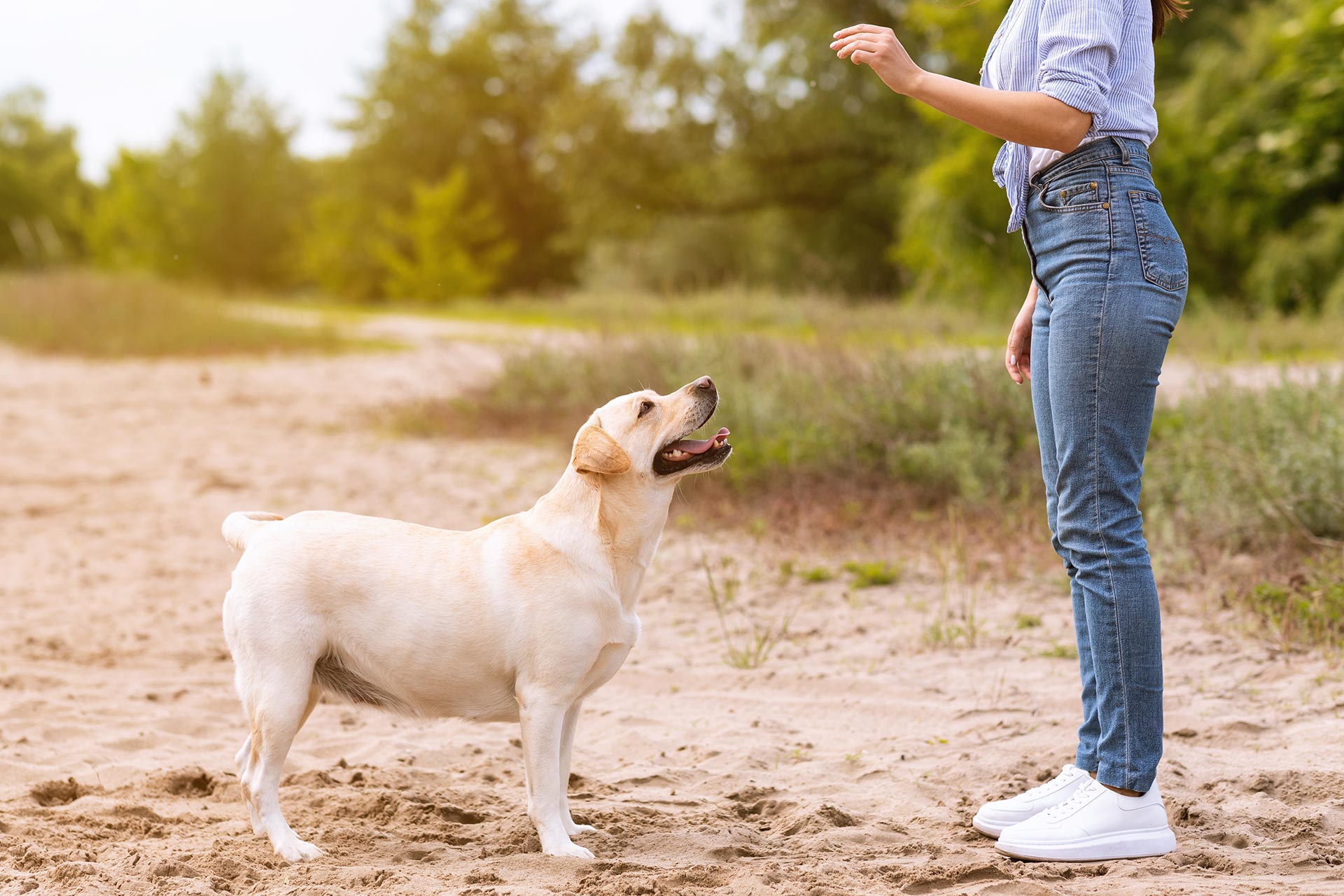Dog Training with Hand Signals
Training your dog is a journey filled with bonding and mutual respect. When words fall short, hand signals can speak volumes, creating a language that both you and your dog understand. This blog dives into the art of dog training with hand signals, a method that strengthens your communication with your dog in a clear and effective way. Let’s embark on this training adventure together, enhancing the bond between you and your dog.

The Basics of Hand Signal Training
Hand signal training involves using simple gestures to communicate commands to your dog. This method works because dogs are naturally good at reading body language. It’s a fantastic way to engage with your dog, especially in noisy environments where verbal commands might get lost. Starting with basic commands like sit, stay, come, and down is the best approach. Use a clear and distinct hand signal for each command, and always pair it with a verbal cue initially. Consistency is key, so make sure to use the same signals every time.
Why Hand Signals Matter
You might wonder why hand signals are as important as verbal commands. For starters, they’re incredibly helpful for dogs who may lose their hearing as they age. Hand signals can also be more effective in grabbing your dog’s attention in situations where they’re distracted or too far away to hear you. Additionally, this method of training reinforces your dog’s focus on you, strengthening your bond and mutual understanding.
Getting Started with Hand Signals
Begin with simple commands that your dog already knows. This makes it easier for them to associate the new hand signals with the actions they’re familiar with. Practice in a quiet, distraction-free area to help your dog focus. Use treats or toys as rewards to make training a positive experience. Be patient and consistent, and gradually reduce the treats as your dog starts responding to the signals reliably.
Advancing with Training
Once your dog masters basic commands with hand signals, you can move on to more complex ones. Teaching directions, like turning left or right, or performing specific tasks, such as fetching an item, can be achieved through the gradual expansion of hand signal vocabulary. Remember, the success of training lies in your patience, consistency, and the positive reinforcement you provide.
Tips for Successful Hand Signal Training
- Start Small: Begin with basic commands and gradually introduce more complex signals.
- Be Consistent: Use the same hand signal for a command every time.
- Pair with Verbal Commands: Initially, pair your hand signals with verbal commands until your dog reliably responds to the signals alone.
- Positive Reinforcement: Reward your dog with treats, praise, or playtime to make learning a positive experience.
- Practice Regularly: Consistency is key to reinforcing learning and improving your dog’s response to hand signals.
- Be Patient: Every dog learns at their own pace. Celebrate small victories and stay patient.
Common Challenges and Solutions
You may encounter challenges, such as your dog not responding to the hand signals or mixing them up. This is normal. If this happens, take a step back and simplify your approach. Focus on one command at a time, and ensure your signals are distinct and easy for your dog to differentiate. Consistency and patience are your best tools for overcoming these hurdles.
Dog training with hand signals is more than just teaching commands; it’s about enhancing the way you communicate with your dog. It opens up a new dimension of understanding and mutual respect between you and your pet. If you notice your canine exhibiting any behavioral issues, St. Paul Pet Hospital is here to help. Give us a call at (651) 789-6275 for more information or to make an appointment.

